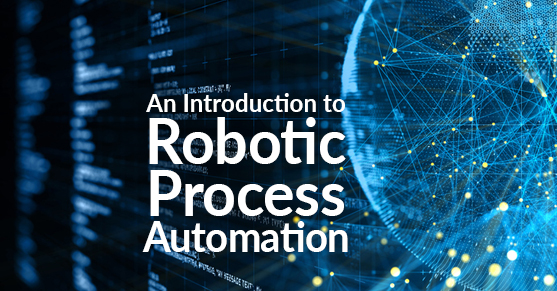Robotic process automation is an emerging technology used to automate routine business processes with the help of software robots. These robots are configured to work on applications to execute transactions involving vast amounts of data and communication with other digital systems.
While working with regular automation tools, any sequences of actions are automated with the help of scripting languages, and APIs are used to interact with underlying systems. In the case of RPA, it automates the activities or tasks previously performed by humans, by replacing repetitive tasks with a virtual workforce, a.k.a., Robot. It uses a robot to run application software in the same way as a person works with that software by mimicking human actions like clicks, navigations, and keystrokes, etc. to automate a sequence of steps to achieve a specific result.
Benefits of RPA:
- Eliminates repetitive work
- Helps in decreasing the delivery time
- An RPA robot can take over the non-value-added tasks performed by humans, while they, in turn, monitor the robots.
- An RPA robot costs a fraction of an FTE and can work 24/7/365, which translates into a significant cost reduction.
- Insight and Analytics – All the activities performed by the robots can be logged and interpreted through customized reporting tools.
- RPA is a non-invasive technology. It doesn’t require any significant IT architectural changes or deep integration with the underlying systems.
- RPA brings improved governance and compliance as the requirements are embedded in the automation rules, and audit trails are available 100% of the time.
- RPA offers a reliable, but fast and cost-efficient way for integration into processes and IT assets.
- Scalability and Flexibility – Once a process has been automated and deployed to a robot, it becomes a matter of minutes to mobilize additional robots to manage volume fluctuations. Scaling the robots up or down can be done quickly for either no extra or minimal cost.
- RPA is simple when compared to other automation tools. It doesn’t require complex integrations using APIs. It replicates human actions while interacting with applications.
- RPA takes advantage of the application features, whereas Regular automation cannot accomplish this.
- RPA works with any IT platform, but traditional automation tools are specific to the technology used in the application.
- RPA can be used to automate any application. RPA’s UiPath can work with any application web, desktop, java, mainframes, SAP, Citrix applications, etc. whereas traditional automation tools like Selenium can only automate web applications.
- RPA is less expensive than other automation tools, so there will be a more substantial return on investment.
Suitable processes for RPA
Robotic process automation can be applied to the below type of operations.
- Processes dealing with massive transaction data and highly frequent, i.e., running daily or within short intervals, are ideal for RPA implementation.
- Processes are triggered by standard consistent input types like Excel sheets, Word documents, emails, PPTs, XML, PDFs, etc.
- The processing method and underlying technical architecture of the systems should be unchanged.
- Processing instructions and rules should be predefined and standardized.
- Processes should consist of activities with few variation scenarios. Each exception due to these variations needs to be handled with different instructions through different mechanisms.
- Mature and stable processes
RPA Application areas:
- Supply chain: The supply chain processes such as “Inventory Management,” “Demand and Supply Planning,” “Invoice and Contact Management,” “Work Order Management,” “Returns Processing,” and “Freight Management” can be automated effectively with the help of RPA.
- HR Services: The HR activities such as “Payroll,” “Timesheet Management,” “Personnel Administration,” “Compliance and Reporting,” “Recruitment,” etc. deals with a considerable amount of repetitive and manual tasks such as form fillings, data capturing, updating and disseminating a large number of request processing. So, HR is an ideal application area for RPA.
- Finance and accounting: RPA implementation benefits a lot in this area to handle tasks such as “Procure to Pay,” “Order to Cash,” “Record to Report,” “Vendor Management,” “Collections,” “Incentive Claims” and “Sales Order.”
- IT Services: With an estimated 30% of time spent on low-level tasks, IT activities such as “Software deployment,” “Server and app monitoring,” “Routine maintenance and monitoring,” “Email processing and distribution,” “Batch Processing,” “Password reset/unlock,” and “Backup & restoration” embrace robotic process automation as a way to focus on the initiatives that require innovative thinking, and be able to tackle the critical organizational tasks currently consuming much of the time.
- Health care: In the healthcare domain, RPA is used for simplifying patient appointment scheduling, speeding up account settlements, streamlining claims management, implementing discharge instructions, recording audit procedures, improving the healthcare cycle, and managing healthcare workflows.
- Other areas of automation: Besides horizontal services, there are so many different organizational activities that can fall easily under the scope of RPA.

